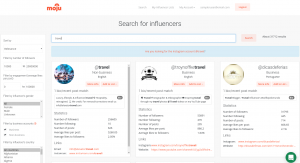For today’s time-strapped shopper, boutiques are becoming more popular by the minute. Compared to shopping in an expansive department store, these smaller specialty shops can be much more enjoyable primarily because the selection isn’t as overwhelming. It also helps that the boutique owner has curated a collection of what he or she considers the best of the best, alleviating the shopper from sorting through racks and racks of items.
Boutiques, however, aren’t the only respite for time-strapped shoppers. Online shopping is, of course, becoming more popular by the minute, too. But, an online store can also introduce feelings of being overwhelmed. And that’s why marketers and merchandizers should take the boutique approach when it comes to selling. Using the same model as boutiques do, eCommerce firms can create their own curated selections in the form of search landing pages.
A search landing page highlights products that are all tied to certain keyword searches and can serve as an effective alternative to the standard, static search results list that consumers expect to get when they plug a search term into a site. When search landing pages are well designed, they can also be considered an unmatched method for promoting products in a visually appealing way.
In fact, companies that place a certain emphasis on landing pages see a higher number of conversions than those who don’t place as much importance on them. According to HubSpot, a leader in inbound marketing and sales, companies with 30 or more landing pages generate 7 times more leads than those with fewer than 10.
But, as mentioned, merely having a landing page won’t quite do the job. The visual appearance of that landing page has been cited as one of the most critical factors affecting a shopper’s purchase decisions. According to the Web Marketing Group, an online marketing and SEO agency, our brains process visuals 60,000 times faster than text. So clearly, a website’s aesthetics are essential when it comes to making a purchase – or not.
Because a curated search landing page can result in improved conversions for online retailers, the team at NetSphere Strategies partnered with CoreMedia to show marketers and merchandizers how they can create their own pages without the help of an IT department or an experienced designer. We delivered that insight in a webinar that aired on January 29, 2015. The recording of that webinar can be viewed in the video above.
To understand how CoreMedia’s LiveContext tool gives business users the ability to make their own search landing pages, Martin Radicke, a solution architect at CoreMedia, walked webinar attendees through the steps. The webinar also highlighted how these search landing pages leverage the power of Solr, the site search tool that comes bundled with WebSphere Commerce. Search engines like Solr aren’t just for queries – they can drive merchandizing, too.
No matter what tool is being employed, the difference between a curated search landing page and a standard search results list is night and day. And like boutique shopping versus shopping in a huge department store, consumers are bound to appreciate the convenience it provides.
To discover other ways that business users can leverage search without the help of IT or an experienced designer, watch the previous NetSphere Strategies and CoreMedia webinar. It covers the basics of Solr, the search engine bundled with IBM’s WebSphere Commerce, and it also discusses how to manage search results in a way that promotes products and helps consumers find what they’re looking for faster.
(219)





